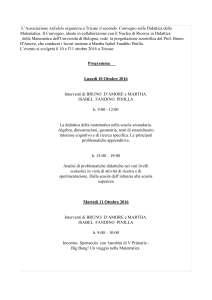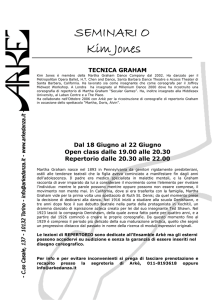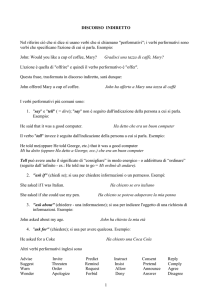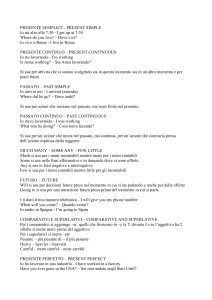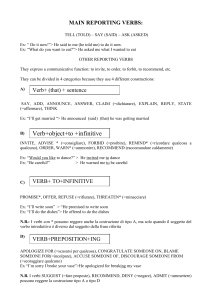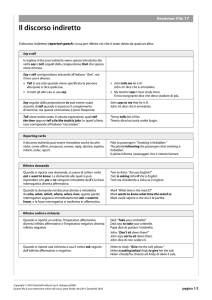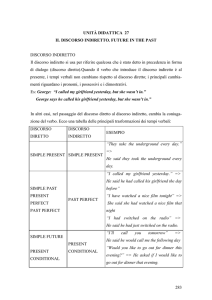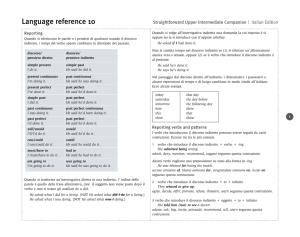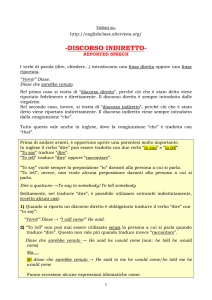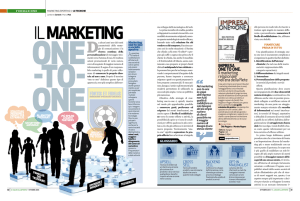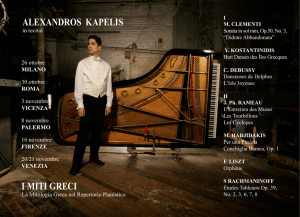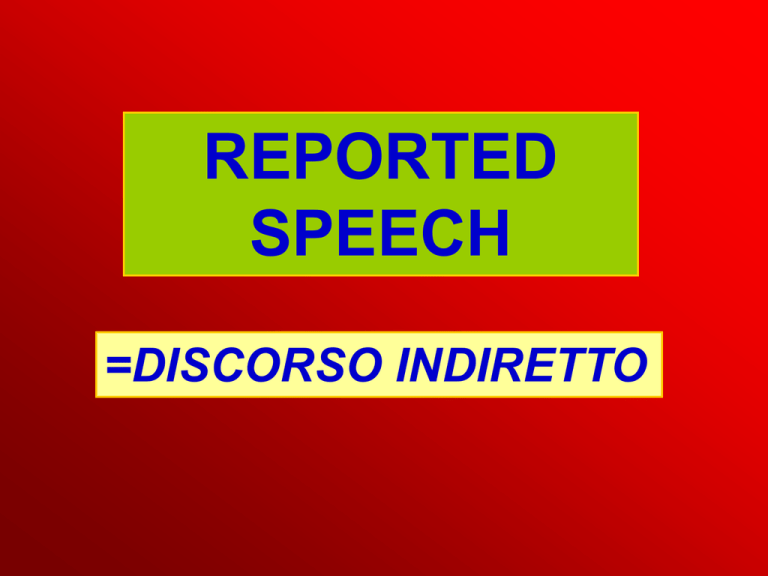
REPORTED
SPEECH
=DISCORSO INDIRETTO
SAY or TELL?
Per il DISCORSO DIRETTO usiamo solo.....
SAY
‘I’m going to buy a new car’, she said.
‘I’m going to buy a new car’, she told.
‘I’m going to buy a new car’, she said to me.
‘I’m going to buy a new car’, she told me.
Per il DISCORSO INDIRETTO usiamo.....
SAY
se non si specifica a chi si sta parlando
She said (that) she was going to buy a new car.
She told (that) she was going to buy a new car.
TELL
se si specifica a chi si sta parlando
She told me (that) she was going to buy a new car.
(She said to me (that) she was going to buy a new car.)
Come cambiano i tempi verbali dal
discorso DIRETTO a quello INDIRETTO?
Se il discorso indiretto è introdotto dal verbo ‘dire’ al
PRESENTE, i tempi verbali NON cambiano.
Martha always says to me: ‘I love the way you dress’.
Martha mi dice sempre: ‘Mi piace tanto come ti vesti’.
Martha always tells me (that) she loves the way I dress.
Martha mi dice sempre che le piace tanto come mi vesto.
Ovviamente cambiano i pronomi personali (o
eventualmente gli aggettivi possessivi) per dare
senso alla frase.
Come cambiano i tempi verbali dal
discorso DIRETTO a quello INDIRETTO?
Se il discorso indiretto è introdotto dal verbo ‘dire’ al
PASSATO, i tempi verbali cambiano.
Si fa il cosiddetto SALTO nel PASSATO.
Martha said: ‘I WALK to school every day’.
Martha said (that) she WALKED to school every day.
SIMPLE PRESENT
SIMPLE PAST
Martha said: ‘I AM EATING too much’.
Martha said (that) she WAS EATING too much.
PRESENT CONTINUOUS
PAST CONTINUOUS
Come cambiano i tempi verbali dal
discorso DIRETTO a quello INDIRETTO?
Martha said: ‘I BOUGHT a new mobile’.
Martha said (that) she HAD BOUGHT a new mobile.
SIMPLE PAST
PAST PERFECT
Martha said: ‘I HAVE just BEEN to London’.
Martha said (that) she HAD just BEEN to London.
PRESENT PERFECT
PAST PERFECT
Martha said: ‘I HAD never BEEN to Spain before’.
Martha said (that) she HAD never BEEN to Spain before.
PAST PERFECT
PAST PERFECT
Come cambiano i tempi verbali dal
discorso DIRETTO a quello INDIRETTO?
Martha said: ‘I HAVE BEEN LIVING in Paris for a year.’.
Martha said (that) she HAD BEEN LIVING in Paris for a year.
PRESENT PERFECT
CONTINUOUS
PAST PERFECT
CONTINUOUS
Martha said: ‘I WILL STUDY more.’
Martha said (that) she WOULD STUDY more.
WILL
WOULD
Martha ha detto: ‘Studierò di più.’
Martha ha detto che avrebbe studiato di più.
Errore
tipico
Martha said (that) she WOULD HAVE STUDIED more.
Come cambiano i tempi verbali dal
discorso DIRETTO a quello INDIRETTO?
Martha said to me: ‘STUDY more!’
Martha told me TO STUDY more.
IMPERATIVE
TO + BASE FORM
Martha said to me: ‘DON’T MAKE noise’.
Martha told me NOT TO MAKE noise.
NEGATIVE
IMPERATIVE
NOT + TO + BASE FORM
Martha TOLD ME TO STUDY more.
mi ha detto
Martha ORDERED ME TO STUDY more.
mi ha ordinato
Martha ADVISED ME TO STUDY more.
Martha WARNED ME TO STUDY more.
mi ha consigliato
mi ha avvisato
mi ha ricordato
Martha REMINDED ME TO STUDY more.
Martha ENCOURAGED ME TO STUDY more. mi ha incoraggiato
Martha PERSUADED ME TO STUDY more. mi ha persuaso
mi ha suggerito
Martha SUGGESTED (that) I should study more.
Martha SUGGESTED (that) I studied more.
Martha SUGGESTED (that) I study more.
DOMANDE nel DISCORSO INDIRETTO
Le domande diventano indirette, quindi......
si costruiscono come le frasi affermative.
WH- questions
Martha asked me: ‘Where do you live?’
Martha asked me where I lived.
Martha asked me: ‘What is your job?’
Martha asked me what my job was.
Yes/No questions
Martha asked me: ‘Do you speak French?’
Martha asked me IF I spoke French.
Martha asked me WHETHER I spoke French.
Altri verbi che si usano per introdurre il
DISCORSO INDIRETTO
Martha said to me: ‘You’ve broken the vase!’
Martha ACCUSED me OF BREAKING the vase.
I said: ‘No, I haven’t broken the vase’.
I DENIED BREAKING the vase.
I said: ‘I’m sorry I’ve broken the vase’.
I APOLOGISED FOR BREAKING the vase.
Martha said several times: ‘I want to see the vase!’
Martha INSISTED ON SEEING the vase.
I said: ‘Ok. I’ll show you the vase!’
I AGREED TO SHOW her the vase.

